Cutting hydrangea paniculata
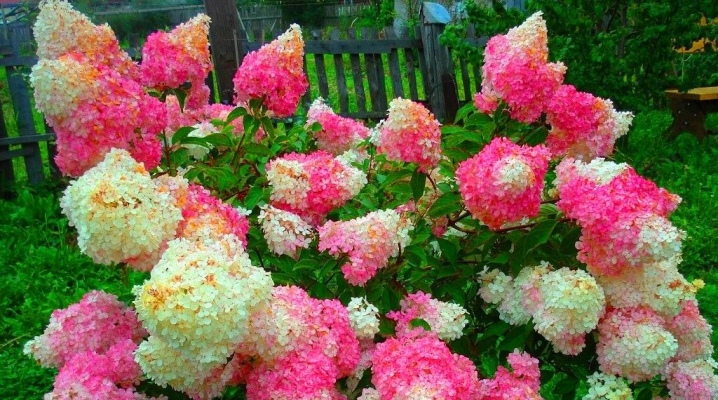
Paniculata hydrangea is propagated in different ways. For this, young shoots (children), air layers, seeds are used; when transplanting and rejuvenating a bush, it is allowed to divide it in order to get several new plants. Why is cut cuttings most often used? It is worth finding out in more detail what this is connected with, and how to correctly carry out pruning and rooting of cuttings.
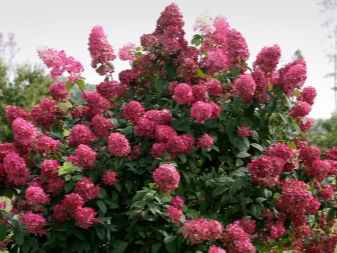

Peculiarities
The most common way of breeding panicle hydrangea is propagation by cuttings, and it is ideal for its other varieties, including petiole (curly) and tree-like. A definite advantage of the method is the preservation of all varietal characteristics of the original plant, this is especially important in relation to rare and valuable varieties., since when they are multiplied, it is envisaged to obtain unique copies.
But not only for this reason, the method is considered preferable - cuttings root best, develop and grow, and this is a definite plus when growing.
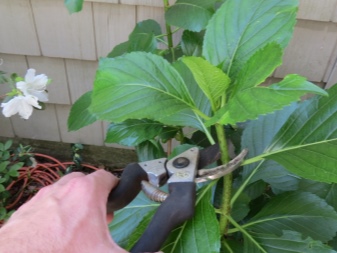
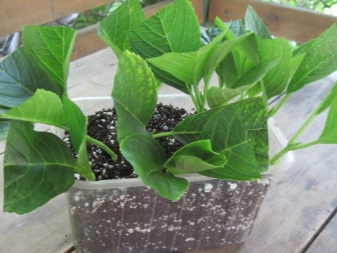
However, in comparison with the adaptation of cuttings in the soil, it is more difficult to carry out cuttings, and you need to know some of the nuances of the procedure, as well as the rules of agricultural technology that guarantee a positive result.
As for the features of cuttings of paniculate crop species, you should know:
- it is wiser to carry it out in the summer, since often spring and autumn procedures do not give the desired result - seedlings can take root and develop poorly;
- special attention should be paid to the choice of the place - it is better to choose a well-lit area near hedges or buildings that protect the plant from drafts and strong gusts of wind;
- when planting, in order to avoid slow growth and diseases, it is worth being picky about the soil - alkaline soils are contraindicated for hydrangeas;
- before the onset of the first wintering, it is necessary to seriously think over how to reliably protect young rooted cuttings - this applies to a greater extent to cold regions.
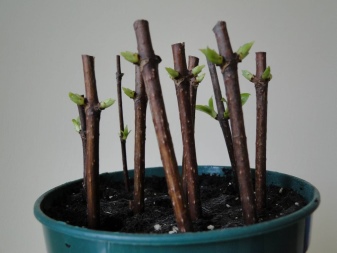
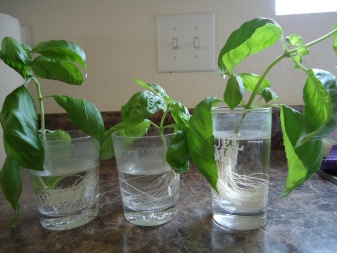
Otherwise, cuttings of paniculate varieties are not much different from this procedure for other hydrangeas, but all agrotechnical work must be carried out in a timely manner.
Timing
It is possible to carry out cuttings of panicle hydrangea both in spring and summer, and in autumn, while each procedure has its own subtleties.
In the spring
Early spring is suitable for cutting cuttings, when the natural process of sap flow has not yet begun in the bush. DFor planting material, last year's lignified branches are selected, which, after cutting, are kept in water for up to 5 days, and only then they begin to divide.
As a rule, after that they are planted in containers with loose, well-moistened soil.

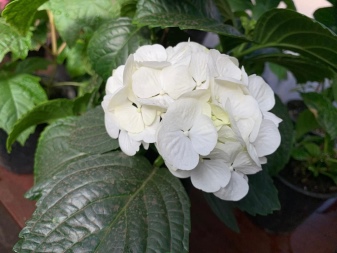
Summer
Breeding hydrangeas in the summer is carried out in June; it is optimal to do this from June 10 to mid-July. For rooting, green shoots are chosen, which have not yet had time to woody, with large buds. It is important to divide them immediately after trimming. If planting is delayed, you can root the plants in water. The roots appear in about 30 days.
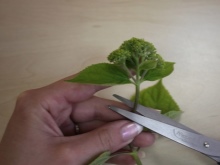
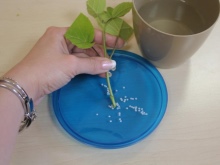

In autumn
Cutting of cuttings in the fall begins in the second half of September, and cultivation in a nutritious substrate is chosen to form the root system. It includes peat and river coarse sand. The planted plants need to create greenhouse conditions, water them up to 2 times every 7 days, and the film should not be removed.
After October 15, the cuttings are seated in separate containers and placed in a cool place with a temperature of 0 to +5 degrees Celsius. When the leaves fall off, the plant needs a dark room; while the leaves are preserved, the pots are left in the light.
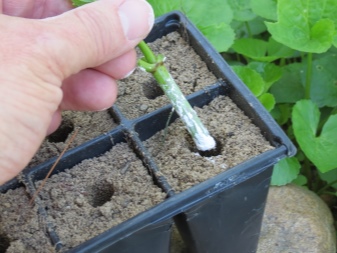
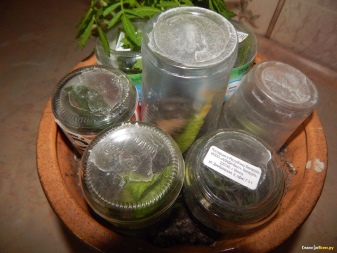
Material preparation
Experienced gardeners carry out the procedure in the summer, in June-July, and only green tops of the branches are suitable for this.
The lower part of the cuttings should have time to lignify, the ideal moment is the beginning of the formation of buds.
It is possible to ensure 100% rooting of shoots by adhering to certain rules.
- An adult, strong and healthy plant is selected, from which it is necessary to cut a branch with sprouts at an angle of 45 degrees. No tops are needed for planting material - they are carefully cut off.
- It is allowed to cut a hydrangea on a cloudy day in the absence of the sun, so that ultraviolet rays do not leave burns in the places of cuttings of shoots and the mother bush.
- The branches need to be divided into 10-12 cm segments, leaving a couple of leaves on each. The lower part is cut off under the kidney.
- The leaves at the bottom of the cutting should be removed and the upper ones should be cut in half.
- When the required number of cuttings is collected, their lower lignified part is placed in a solution of a root-forming agent for 2 hours. If such a drug is not at hand, use natural honey diluted in water (200 ml 1 tsp). If the nutrient composition HB101, made from plant extracts, is used, then the future seedling needs to be kept in it for 30 minutes.
- Another option to stimulate the rapid formation of the root system is to dip the cuttings in water and then in a dry mixture of a growth promoter.
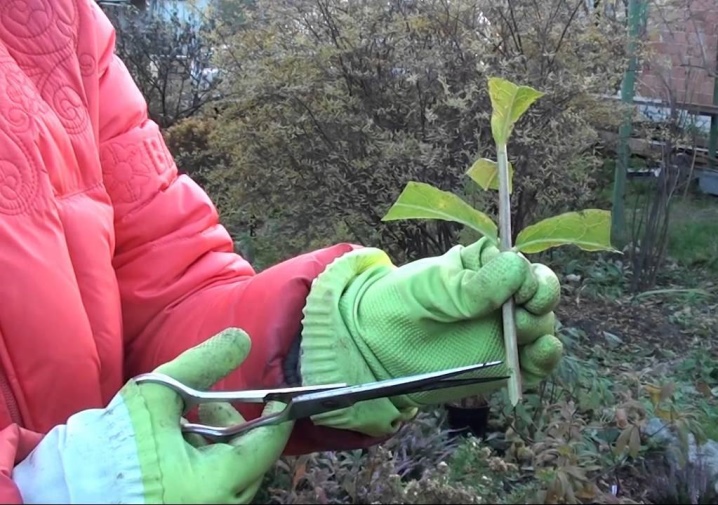
The best biostimulants that are suitable for panicle hydrangeas are the natural organic remedy "Heteroauxin" based on beta-indoleacetic acid (phytohormone), "Zircon", in addition to accelerating growth, preventing the development of fungal and bacterial plant diseases, and well known to many gardeners "Kornevin".
Alternatively, you can cut the cuttings from the side branches at the bottom of the bush, but you need them to grow in good light.

It is important to use the middle part of the shoot of the current or last year - this way the seedlings take root faster and easier. Besides, experts advise to choose branches with developed and large buds.
It is recommended to take material for planting early in the morning, since at this time the plant contains the most moisture and takes root better in the future. If the procedure is carried out on spring days, then the branches are kept in water for about 3-5 days.
Carrying out such work at home, we must not forget that the pruner must be pre-sterilized. - very often the plant is affected by viral diseases if the inventory is not disinfected.
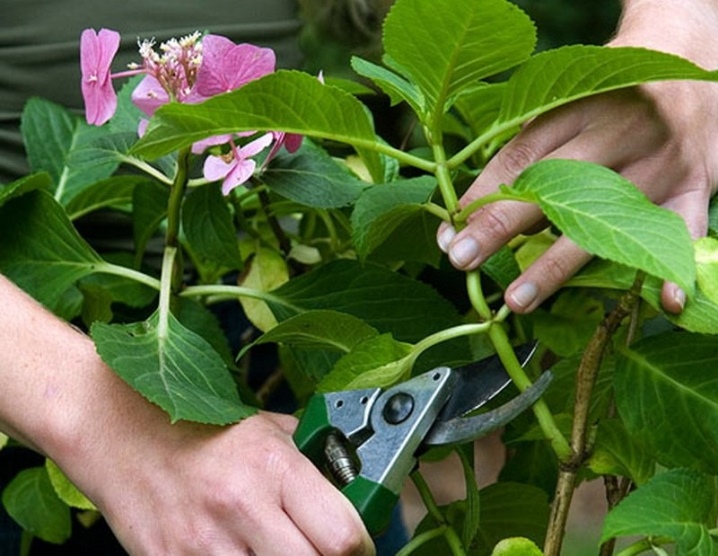
Planting and maintenance
Hydrangea shoots can be rooted in water and in prepared soil mixture - for paniculate varieties, both methods are acceptable.
If water is selected, then the rooting scheme will look like this:
- a spoonful of cinnamon is added to a dark container with a volume of 250 ml;
- 2-3 cuttings are placed in it so that their lower part is 1/6 of the length in water;
- when water evaporates, it must be topped up with settled, filtered water, it is not necessary to completely change the solution;
- during spring cuttings, plants are kept on the south side in conditions of diffused light, when autumn branches need to be rooted, a container with them is installed in partial shade;
- when forcing, it is recommended to regularly saturate the solution with oxygen, which will prevent root decay.
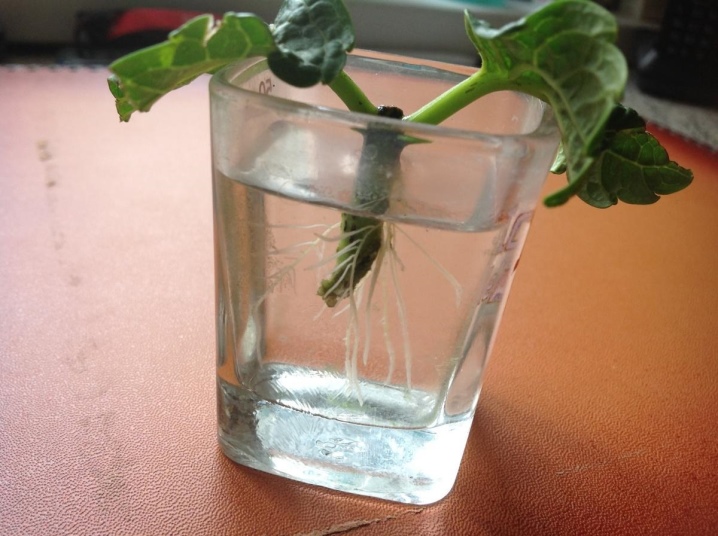
When root shoots 2-4 cm long appear, the plant can be transplanted into soil with a low acidity level for further rooting.
Planting hydrangea in the ground right away is also acceptable. Before planting the petioles, it is necessary to prepare a nutrient substrate for the plant, taking into account the established requirements.
- The soil should be fairly loose, so a mixture of vermiculite and coarse sand is used.Another option is sand, peat, perlite and fertile soil. You can use any composition by adding citric acid (1 g) to it, all components are taken in equal parts.
- Plants are planted in wooden boxes, the outer part of the bottom of which is covered with rags for the purpose of warming, and inside they are laid out with wool strings at intervals of 5 cm, their ends are immersed in vessels with water - thanks to this, the soil will be moderately moistened and will not dry out. The harvested cuttings must be correctly positioned in the ground - at an angle of 45 degrees and at a distance of 12-15 cm from each other, they must be buried by 2-3 cm.
- After planting, the soil under the plants must be moistened by spraying.
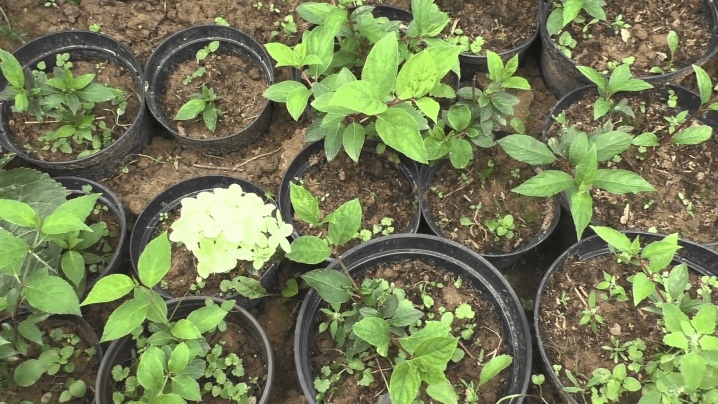
Further care for young hydrangeas is to cover them with plastic wrap in order to create greenhouse conditions.
You can protect the land from drying out, and the seedlings from overheating, you can place the boxes in a dark place at a temperature of + 20 ... 25 degrees during the day, and + 15 ... 18 degrees - at night.
Hydrangeas are transplanted a month later, when they have roots 2-3 cm long, in separate containers with a volume and height of 10 cm. The nutrient substrate is chosen special for this type of culture, or it is prepared independently from sand, peat and garden soil. The pots are then placed in a shaded area, continuing to water and ventilate regularly. If buds form on the branches, you can feed the plant.
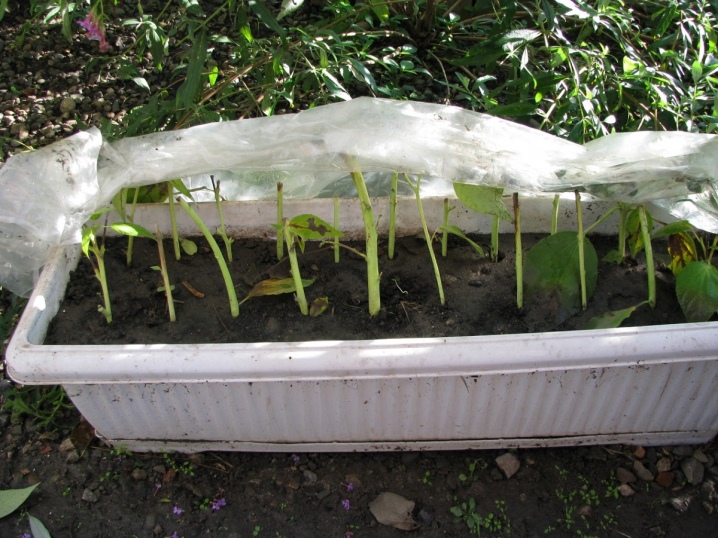
Preparation for planting in the ground
It is possible to plant young hydrangeas with formed roots only the next year. And before that, you should take care of the plant on the eve of winter.
There are 2 options:
- bury a container with a bush in the ground so that it does not freeze, but it is better to do this in a greenhouse;
- reduce the frequency and volume of watering, and then move the cutting to the cellar or basement.
At the first signs of growth in the spring, the soil begins to be watered moderately. In fact, the plant is ready to plant. Before placement, a complex mineral agent containing potassium, phosphorus and nitrogen is added to the planting pit, and 2-3 days before that, the bush is no longer irrigated - this is necessary in order to easily remove it from the container along with the soil clod. Immediately after planting, to create a beautiful crown, the hydrangea is cut to 2/3 of the height of the bush.
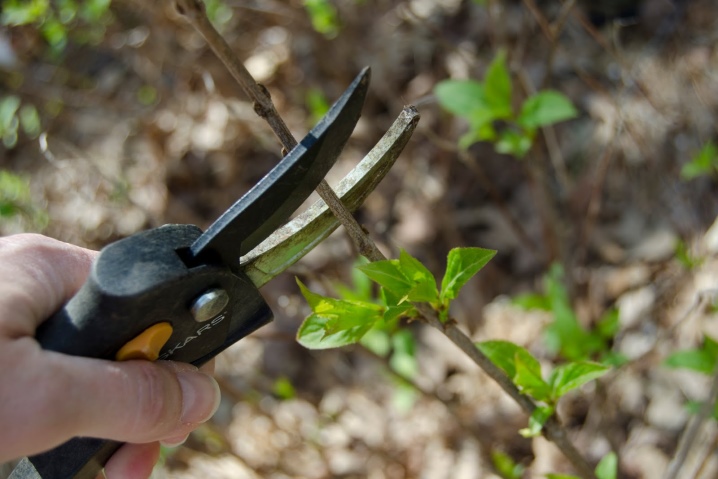
If you follow the instructions correctly, observing the rules of cuttings, using this method it is possible to grow a high-quality ornamental shrub, which will decorate the site with lush flowers of magical beauty all summer long.
For hydrangea cuttings, see below.





























































Thank you very much, all methods are very clear and simply described.
The comment was sent successfully.